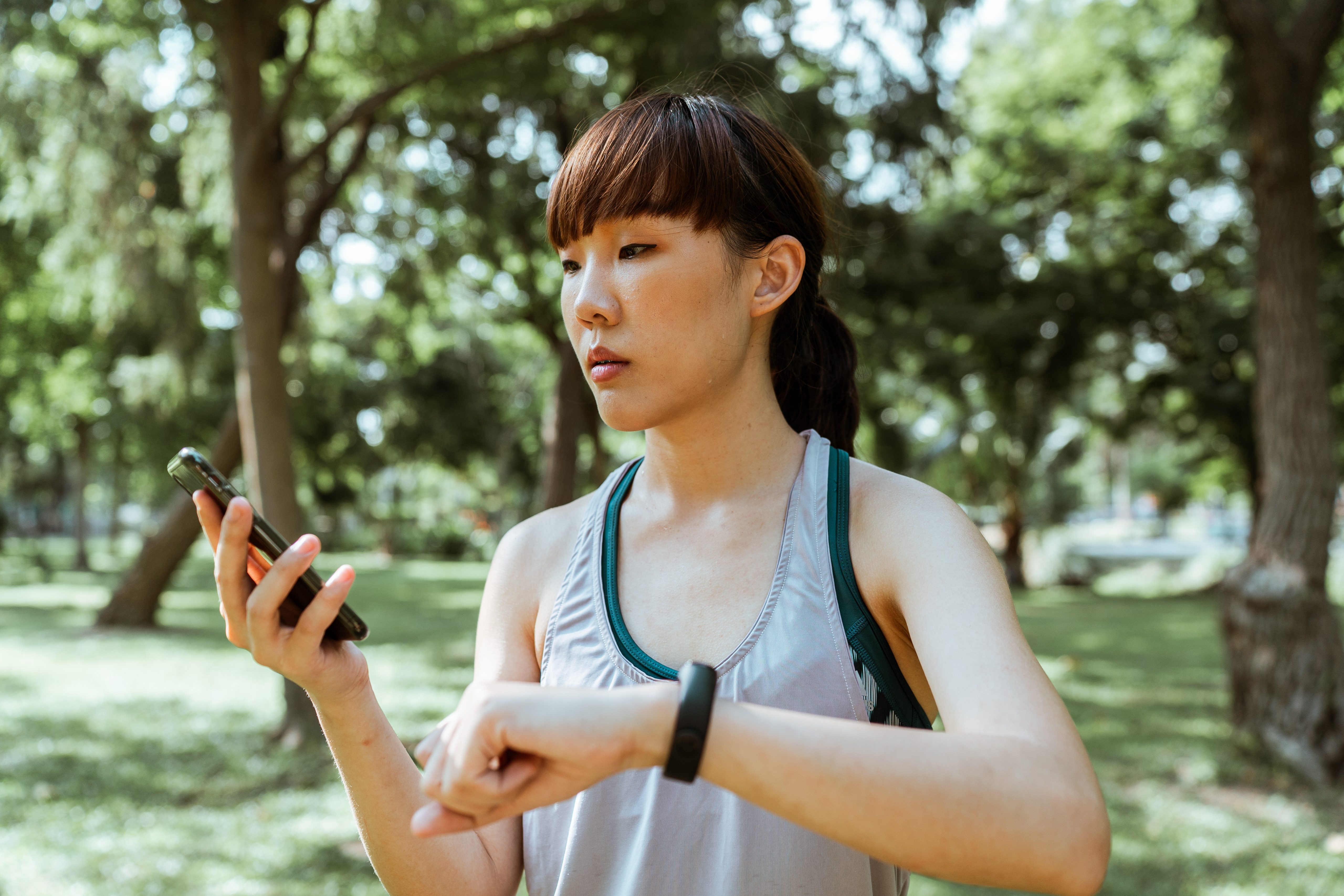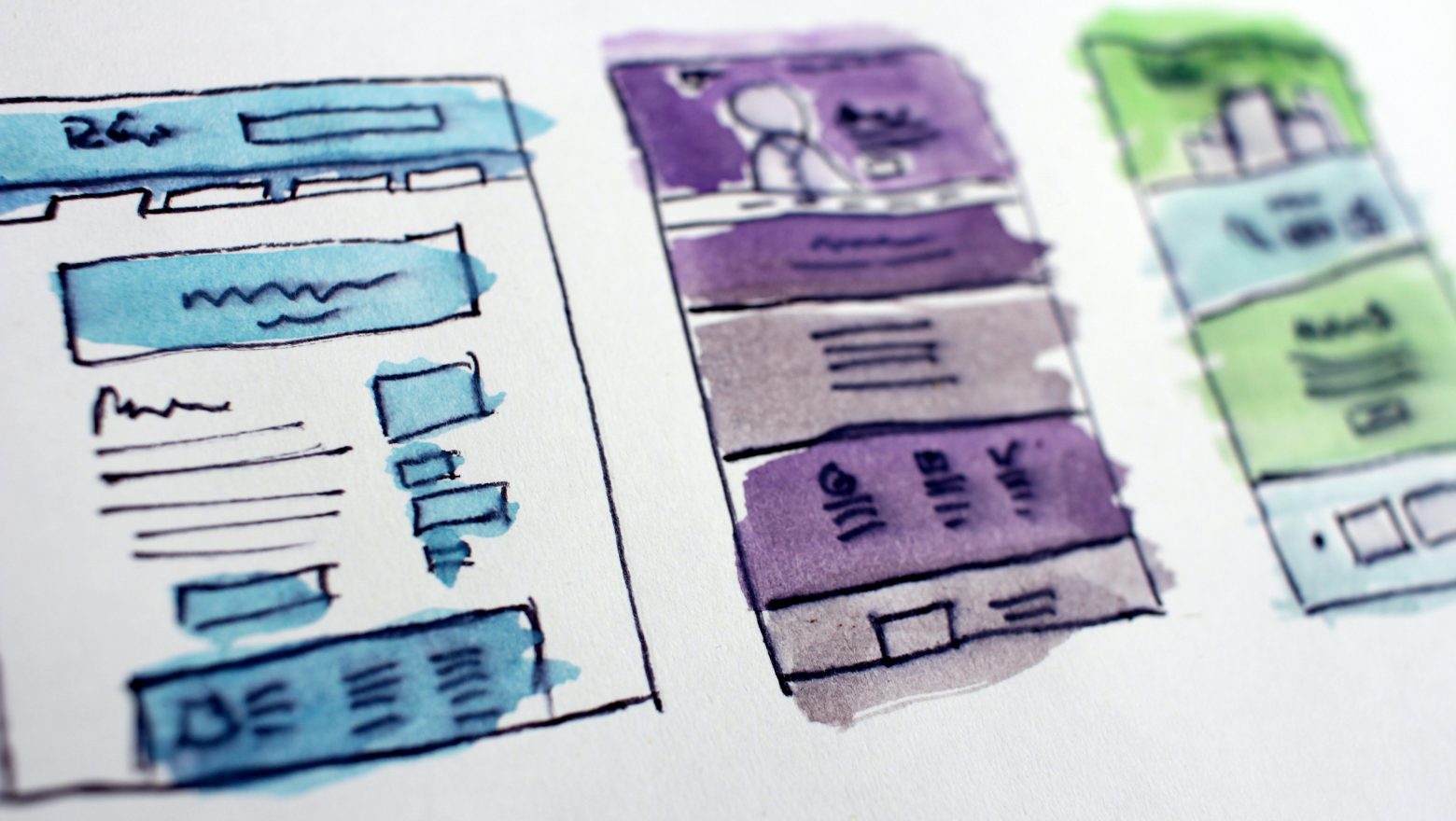Apps connected with Wearable Devices are more valuable than you think.
But not all people realize their significant impact. After all, while speaking with various people, we noticed that they perceive the creation of products like “app and wearables device integration” as rocket science.
In reality, if we try to break down what the development of such applications consists of, it turns out to be quite feasible and impact is really crucial.
The same goes for the healthcare wearable app development – a field that’s gaining a lot of traction these days, as more and more people look to monitor their health and fitness levels using smart devices.
What is wearable technology and what can it bring to business?
First of all, we are talking about the advantages of integrating the device and the application. The possibilities of working with user data from such devices to an app are truly impressive:
1. Enhanced user engagement: businesses that offer wearable-integrated health apps can attract and retain a more engaged user base. The gamification elements, real-time tracking, and personalized insights provided by wearables create a captivating user experience, driving higher levels of engagement with the app.
2. Good retention: wearable devices keep users motivated by offering continuous feedback and progress updates. Achieving daily step goals, surpassing calorie burn targets, and improving sleep quality become milestones that keep users engaged in their health journey.
3. Data-driven decision making: aggregated and anonymized health data from wearables can be analyzed to derive insights into health trends and behaviors. This way, you can release features more precisely or address shortcomings based on the most accurate version of data analysis (after all, the user’s body will never deceive).
So, what should we pay special attention for wearable app development ? Let’s take a look.
Points to consider for the wearable app development
Developing an application connected with a device differs slightly from creating a standard application:
Firstly, you need to ensure compatibility with various types and models of devices. Additionally, the app should support the latest device versions/updates and display statuses on the screen within the correct time frames.
Secondly, many wearable devices operate on batteries, and managing power consumption is crucial. Developers must create efficient application algorithms to extend the device’s lifespan.
And thirdly, we must ensure seamless integration of wearable data into app screens.
I. User experience design
In reality, we’ve written a lot about health app design, so here we’ll focus specifically on how UI and UX simplify interactions between devices and mobile applications.
You can read about design principles here: 7 Pillars of Simplicity for intuitive UX in Health Apps or Emotional Design that improves Product Metrics.
Features might vary, but two popular UX points are essential for such interactions:
1. UX of control and feedback:
1.1 The first mandatory point is when we display on the app screen the device connection/disconnection or any other device-related notifications (like its status).
This offers a clear and straightforward way for users to understand the state of their wearable device at a glance. For example, when using a fitness tracker, showing whether it’s connected or disconnected can reassure users about the device’s functionality.
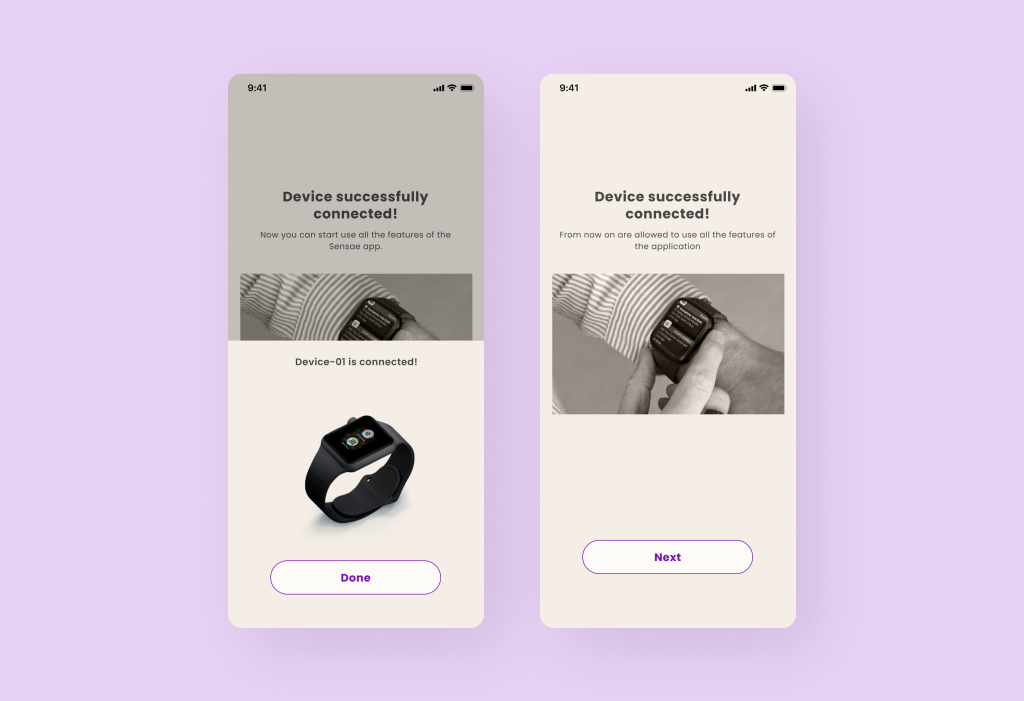
1.2 The second mandatory point is when we guide users on what to do with the device at a given moment.
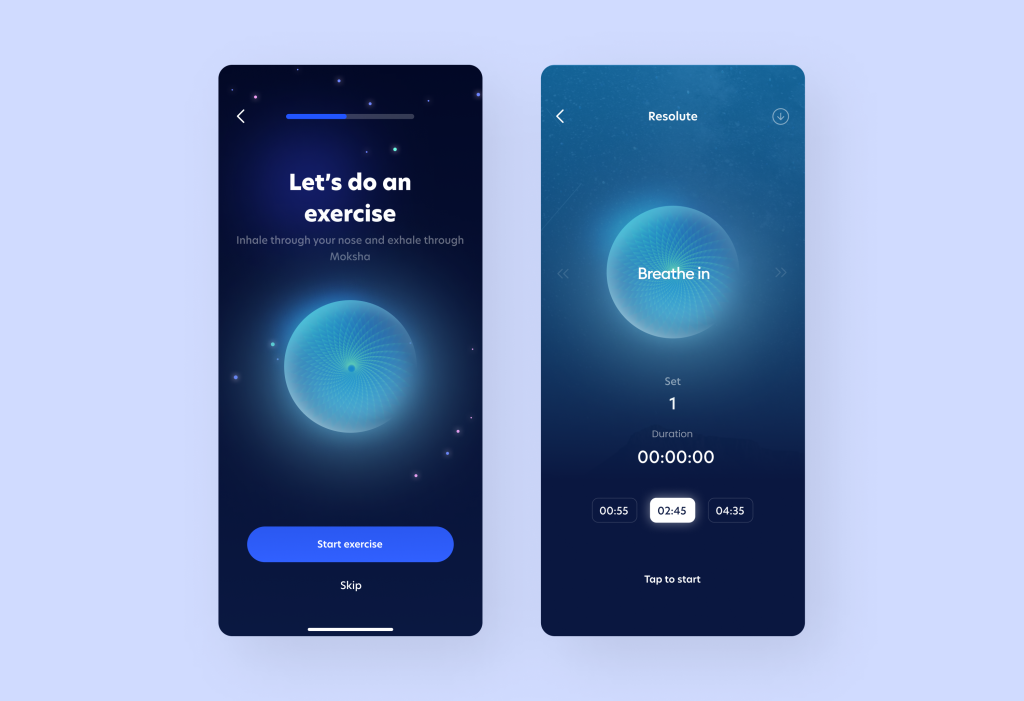
In the screenshot above, it demonstrates the inhalation/exhalation commands using the device.
Or if the wearable is used for exercise monitoring, the app can display progress and achievements, such as steps taken, calories burned, or heart rate zones reached.
This type of real-time feedback motivates users and helps them stay engaged with their health goals.
2. UX of data analysis: here, we must not only present statistics in a comprehensible manner and select suitable dashboards (hopefully avoiding excessive pie charts 🙂 ), but also consider how users will comfortably interact with them.
Here are three UX rules that need to be followed.
Intuitive data display: present data from the wearable device in a clear and easy-to-understand format. Use meaningful labels, icons, and visualizations that resonate with users. Avoid clutter and prioritize essential data to prevent overwhelming users. When it comes to healthcare wearable app development, making sure the data is presented in a way that’s easy for users to understand is super important.
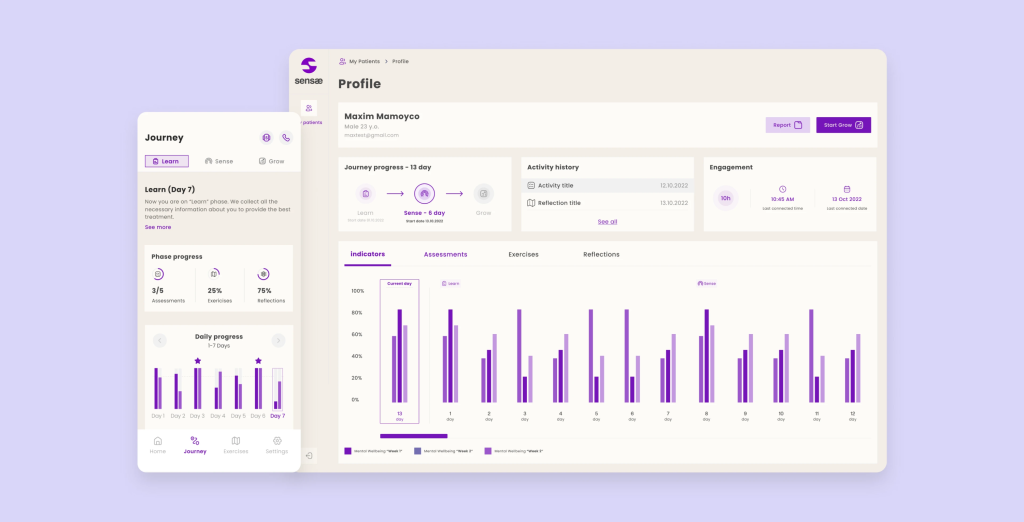
Real-time feedback: if the wearable device provides real-time data, ensure that users receive immediate feedback within the app. For example, an app should display the current heart rate in real-time, accompanied by visual cues indicating normal, high, or low readings.
Alerts and notifications: implement alerts and notifications for critical events or abnormal data readings. Alerts should be informative and actionable, guiding users on the steps they should take based on the situation. Allow users to customize alert thresholds when applicable.
So, for the last point now let’s provide an example of such a type of UX and introduce you to a company we worked with. Sensae is a Danish mental wellness company helping people manage stress and anxiety using AI to interface with emotions through personalized haptic biofeedback.
For Sensae, we created a patients list where each patient’s current condition is displayed (it also includes Real-Time Feedback).
If something is not good somewhere, it is highlighted as an alert (Alerts and Notifications). In other words, the coach already knows where to go urgently from the list of patients. This is convenient for starting the workday, as the specialist can immediately focus on the most important tasks.
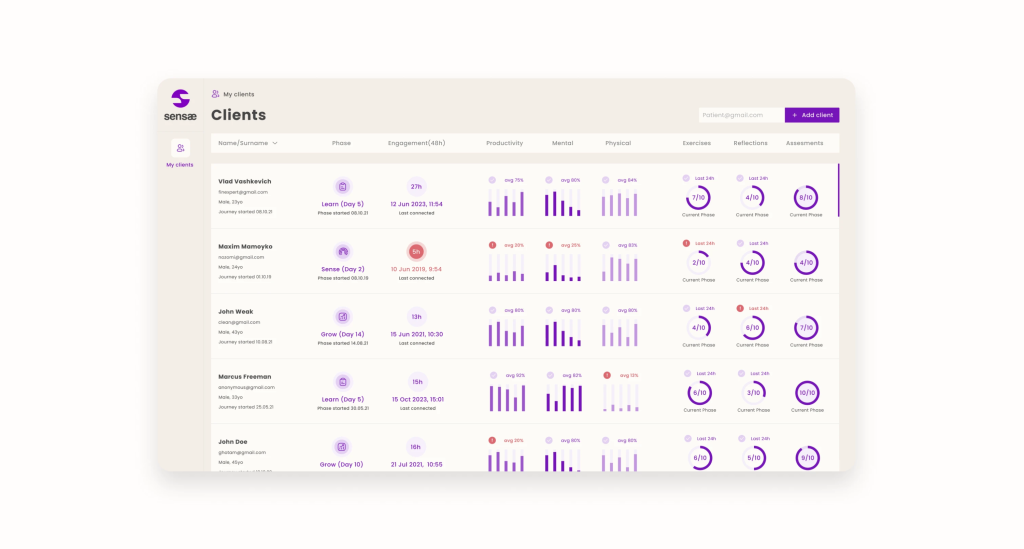

Learn how we’ve built AI health platform for Danish company
Also, observe that we utilize easily comprehensible and user-friendly histograms as the primary data visualization method here (Intuitive Data Display point).
Remember, the goal is to make interactions with the device intuitive and informative, guiding users towards making the most of their wearable technology. The design should empower users to effortlessly navigate their device interactions within the app interface, enhancing their overall health and wellness journey.
II. App & wearable device integration
Here we’re not just talking about wearable app development. We’re specifically discussing Integration of an app with a device. So, what do we need to develop?
1. API integration: for the app to communicate with wearable devices, we as developers create application programming interfaces (APIs). These APIs facilitate the exchange of data between the app and devices, ensuring seamless connectivity.
2. Creating a communication channel: between the app and wearable device. This is essential to ensure accurate data exchange and a smooth user experience. Reliable communication allows users to trust the data collected by their wearable devices and the insights provided by the app.
How to build a health tracker wearable app? Here are some key considerations for building such communication channels:
– Data synchronization: implement a robust synchronization mechanism that ensures data consistency between the app and the wearable device. This involves setting up protocols to handle data updates, transfers, and possible conflicts.
– Real-time updates: enable real-time data updates between the wearable device and the app. For example, if the user’s heart rate changes, the app should reflect that change immediately to provide relevant insights.
– Error handling: develop error-handling mechanisms to handle communication failures gracefully. If the connection is lost or data transfer fails, the app should notify the user and attempt to restore the connection.
3. User authentication and authorization: security is paramount in health apps. Here we implement user authentication and authorization mechanisms to ensure that only authorized users can access sensitive health data.
4. Device compatibility verification: Ensure that the connected devices are legitimate and compatible with the app. Implement device verification mechanisms to prevent unauthorized devices from connecting.
5. Notifications and alerts: developers set up notification systems that inform users about important events, such as low battery levels on connected devices or abnormal health metrics.
6. Integration with third-party services: many wearable device-connected apps integrate with third-party services, such as electronic health records (EHR) systems or cloud storage. Here we should handle the integration and ensure secure data sharing.
7. Data privacy and compliance: we should ensure that the app adheres to data privacy regulations and compliance standards, such as HIPAA or GDPR. This includes implementing encryption, secure data transmission, and audit trails. You can read more about this Here.
8. Scalability and performance: developers design the app’s architecture to handle scalability and performance requirements. As user and data volume increase, the app should remain responsive and efficient.
9. And remember about memory and battery consumption: wearable devices usually offer less memory and battery life compared to their mobile counterparts, let alone desktop computers or laptops.
Developers accustomed to creating desktop and mobile applications need to approach wearable device app development differently.
To optimize applications for these tiny devices, developers must adopt a stringent, simplified approach — without extra code that slows down app performance, without processes that consume more energy than necessary.
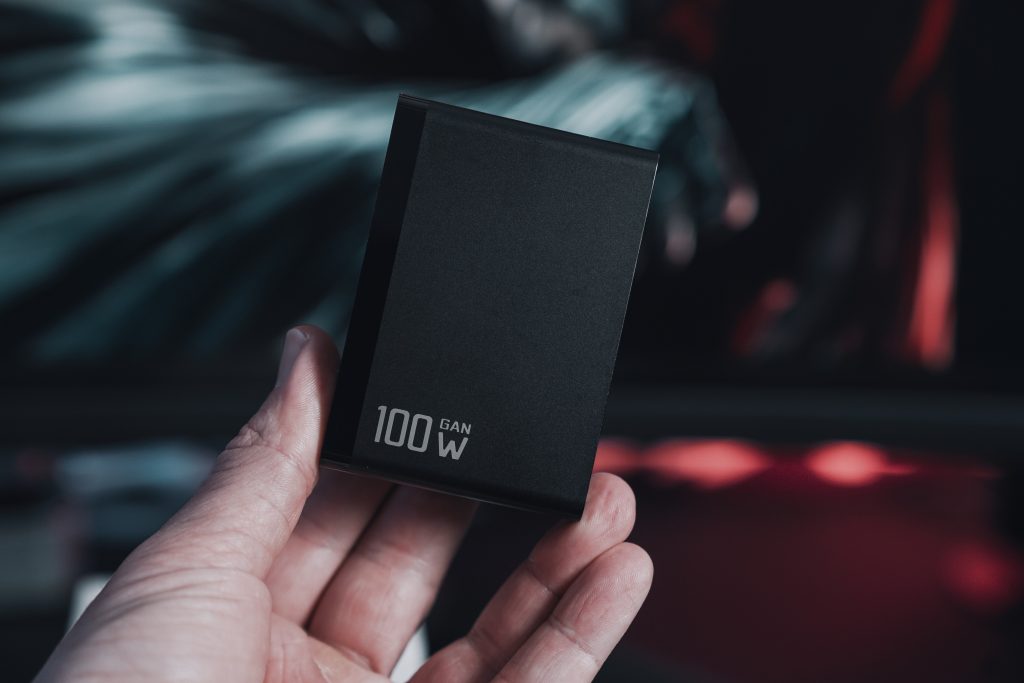

Here are three different examples of this approach:
1. For instance, when developing an app for a wearable fitness tracker, instead of creating complex animations and graphical effects that could heavily tax memory and battery life, developers can focus on providing core functionality: step tracking, heart rate monitoring, and more. This allows conserving resources for more crucial tasks.
2. Another example involves optimizing server requests. Instead of frequent and redundant data retrieval requests, developers can utilize data caching on the device to avoid unnecessary battery and network consumption.
3. The simplified approach also encompasses the use of efficient data processing algorithms and minimizing extraneous operations. For instance, in a heart rate monitoring app, developers can employ data compression algorithms to reduce the volume of transmitted information.
Pay special attention to this aspect, as no one would use an app that drains their smartwatch’s battery within an hour.
Finally, let’s move on to the data storage & processing aspect: raw data received from wearable devices may need to be processed, transformed, and normalized for analysis and display. Developers implement data processing algorithms to convert raw data into meaningful insights.
However, this topic is more extensive and deserves a dedicated chapter.
So, what about seamlessly Integrating Wearables Data into App Screens?
III. Transfer of wearables data into app screens
One of the key features of a wearable app is data transfer. First of all, as we established at the beginning, devices offer more accurate analytics since they analyze actions rather than thoughts of the user. The application itself maximizes the convenience of working with this data (and devices).
How this process looks:
1. Data collection: wearable devices continuously gather data from various sensors such as accelerometers, gyroscopes, heart rate monitors, and GPS modules. These data include information about physical activity, sleep patterns, heart rate frequency, and much more.
2. Data transmission: the captured data is transmitted from the wearable device to the connected mobile application using wireless technologies like Bluetooth, NFC, or Wi-Fi. This data transmission ensures that the app has access to the most recent performance indicators.
3. Data aggregation: once the app receives the data, it needs to analyze and structure it for further processing. Data parsers are software components that interpret incoming data, extract relevant information, and format it into a usable format.
4. Data storage: the analyzed data is then securely stored in a database (or cloud storage). Again, it’s worth reiterating that health apps need to adhere to data security and encryption recommendations to prevent unauthorized access to confidential medical information.
For instance, in Sensae: users wear devices that gather information on their pulse, heart rate variability (HRV), and many other metrics. Data transmission occurred using Bluetooth and NFC. Aggregation was achieved through a parser.
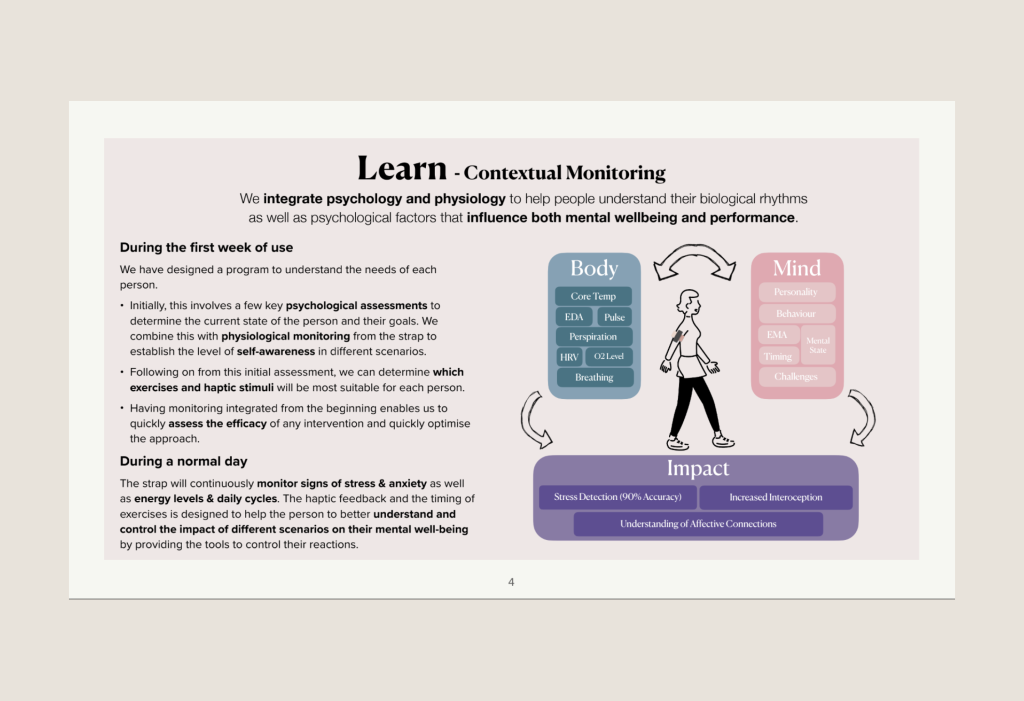

What to do next with this data?
After the wearable device data is collected and stored, health apps can use data analysis methods to extract meaningful information and provide valuable insights to users.
Here are variations of data analysis:
Trend analysis: data analysis algorithms can uncover trends and patterns in the data. For instance, they can detect changes in heart rate frequency during different activities or track sleep quality changes over a week.
Health goal tracking: users often set health-related goals such as weight loss, increased physical activity, or improved sleep. Data analytics can track progress towards these goals and provide visual representations of achievements.
Early detection of health issues: advanced data analysis models can identify potential health issues by detecting anomalies in data. For example, abnormal heart rate patterns might signal a serious heart problem.
Behavioral data: health apps can provide behavioral data by analyzing user data against established benchmarks. This helps users understand their habits and make informed decisions about their health.
Predictive analytics: advanced analytics can forecast future health trends based on historical data. For example, an app could predict potential weight loss based on consistent exercise and dietary habits.
Based on this, personalized recommendations can be crafted: by analyzing user data, health apps can offer tailored suggestions to improve well-being. For instance, if the app detects irregular sleep patterns, it could suggest adjusting sleep routines to enhance sleep quality. Again, healthcare wearable app development is all about using data to help people live healthier lives, so features like personalized recommendations are key.
Or take our example with Sensae: using analyzed data collected from the device, the AI in the app could offer the most suitable exercise program for a specific user.
So, now you can see the reasons for developing wearable apps 🙂
A separate topic! It’s also important to consider security and regulations! To avoid repeating our article on this topic, we’ll provide a link where we’ve compiled all the crucial information about acts and standards in a concise and easily understandable format HERE.
And a bonus: what types of wearable devices exist categorized by use cases?
As a bonus we’ll showcase real use cases and examples of well-designed applications (design and integration ideas that you can draw inspiration from) and explain the reasons why this combination is becoming increasingly popular.
“A use case” is how your user will use the application and what the outcome will be. Below we provide examples.
1. Personal trainer: here, we use a device that collects data, sends it to the app, and adjusts the workout program (or diet) based on the user’s progress (based on factors like heart rate frequency and completed in-app tasks).



So, we’ve grasped the scenario (use case), but what devices can be used for it?
For instance, for the “personal trainer” scenario we can use smartwatches (it’s an obvious and accurate choice). But what about alternatives?
If you possess a creative mindset, you can venture into various directions.
For example, Posture Pal uses the motion sensor in AirPods (or Beats) to improve neck and shoulder posture. If the posture is poor, visual, vibrational, and auditory notifications are employed when incorrect back position is detected.
And the best part is that it’s portable and can be carried around. In other words, the choice of device may not be so obvious 🙂
All the options that can be considered:
– Smartwatches;
– Smart clothing;
– Any other data-collecting devices of various forms.
2. The second use case is Observer: in such cases, it could involve smart glasses or audio recording devices whose sole purpose is to send data to certain institutions. In other words, it’s remote monitoring of patient indicators.
The most common example:
Wearable devices with sensors monitor health metrics like blood pressure ->
Health apps transmit this data to healthcare providers ->
And enable remote patient monitoring and timely interventions.
For scenarios like Observer, smart glasses platforms are often used: they can receive and interpret input data.
But other solutions such as smart wristband and smart rings are also present in this category.
For example, HeartBeat Health. Users wear a smart wristband that contains sensors to monitor health metrics: heart rate, steps taken, distance traveled, and sleep quality.
And most importantly, they can transmit information to their doctors using the wristband.
Image Credit: youtube channel “Heartbeat Health“
What other options are available? Almost all devices can be suitable here, as they collect data: smart rings, smart watch, smart clothing/footwear, headphones.
3. And Rescuer: for instance, smart glasses can help users detect obstacles while skiing.
Moreover, wearables equipped with accelerometers can detect falls and send alerts to emergency contacts or healthcare providers. Health apps can connect to emergency response services to ensure timely assistance.
The same devices are used here as in the use case “Observer”. Only the purpose of data collection differs. But smart glasses are the most popular.
By the way, if you want to learn about wearable app development in the guide format, familiarize yourself with our concise and step-by-step article.
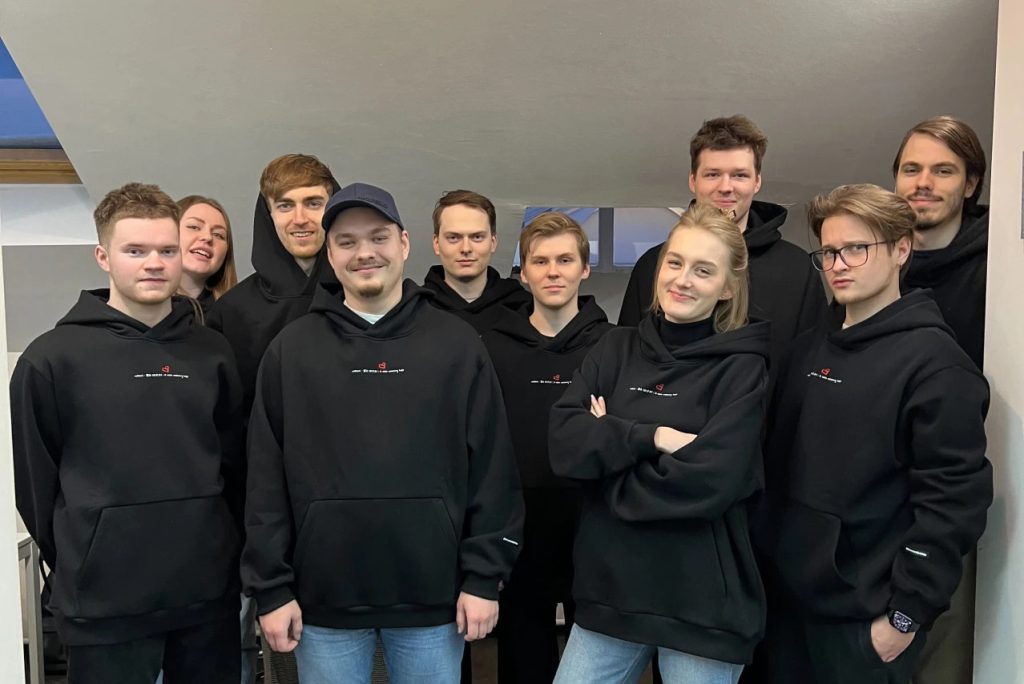

Conclusion
It was wearable app development guide for 2024. We hope this article was useful for you!
Who we are? We are a digital health product studio, who transforms healthcare digital experiences and sets new standards for delivering digital healthcare in a way that positively impacts people’s lives.
We assist healthcare startups in designing and developing digital products, while also helping healthcare organizations undergo transformative changes.
If you are interested about our experience check our portfolio with case studies by the link or you can read more about us here.
And write to us now on m@nozomihealth.com and we will discuss how we can help ensure that your product brings real benefits


